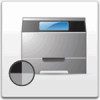Lexmark Monochrome Laser Complete Printer Reference (1.7 MB) - Page 171
Creating a partition, Enabling job buffering, on that part of the disk. However - printer workgroup
 |
View all Lexmark Monochrome Laser manuals
Add to My Manuals
Save this manual to your list of manuals |
Page 171 highlights
Job buffering provides several advantages: • The printer can accept jobs sooner, which frees up the host system and the network much quicker. • The printer can accept jobs on all ports at the same time, as long as the job buffering partition on the disk is not filled to capacity. • The printer stays busy printing jobs stored on the disk after a host computer, network connection, or print server goes down. • After a power loss, buffered jobs that were completely spooled to the hard disk can resume printing without loss of data. • If the printer fails, you can remove the hard disk, install it in another printer, and print the jobs that are stored on the disk. Creating a partition Before you can enable job buffering, you must allocate a portion of the disk for job buffering. Creating a new partition formats the hard disk, erasing the contents of the disk. You can create a job buffering partition through MarkVision or by selecting the Job Buffer Size menu item from the Setup Menu on the operator panel. The partition can be 10% to 100% of the disk, in 1% increments. The minimum recommended size of a job buffering partition is 50MB, which is substantially less than 10% of the 2.1GB disk Lexmark offers. Once you've created the job buffering partition, you cannot store forms, fonts, or macros on that part of the disk. However, the rest of the disk is still available for storing resources. Enabling job buffering Once you have created a job buffering partition, enable job buffering for each port. You can use the operator panel or MarkVision to configure the printer for job buffering. You must be a workgroup administrator to change job buffering settings in MarkVision. After enabling job buffering for a particular port, the printer resets. To avoid problems with the print jobs as they come through the interface ports, we recommend leaving the interface buffers (Parallel Buffer, Network Buffer, and so on) set to Auto for all ports on which job buffering has been enabled. See the printer menus that start on page 68 for more information on setting up job buffering for the different interface ports. Managing memory 171















